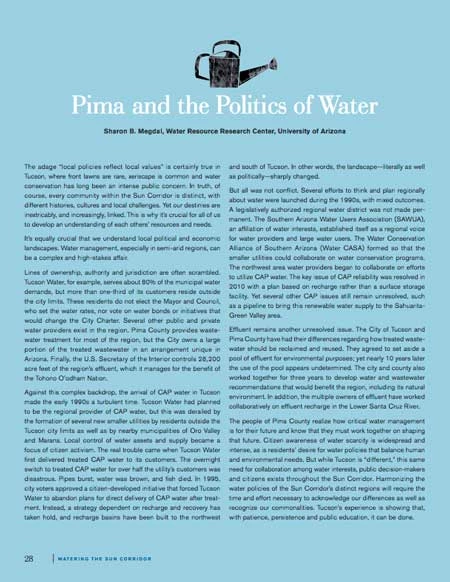Watering the Sun Corridor: Making Choices in Arizona's Megapolitan Area

This Morrison Institute for Public Policy report examines water use, supply and future demand for Arizona's Sun Corridor - the Central Arizona Urban Region that includes Phoenix and Tucson.
Running out of water must be among the oldest of human fears. Today, this ancient dread still lingers in the rich green croplands and sprawling new housing developments of the American Southwest. Life is good in these warm, sunny, roomy places. But life there also brings the reminder of relentless and inescapable challenge. The challenge of water. The fear of running dry. Arizona’s Sun Corridor—the Central Arizona Urban Region including Phoenix and Tucson—is one of these places. In the summer of 2010, residents read in The Arizona Republic that their region was among the most threatened in the U.S. from global warming.1 A study for the Natural Resources Defense Council (NRDC) found the Sun Corridor at “extreme risk” because of a likely widening gap between precipitation and water demand.2 A few months later The New York Times announced that “Water Use in the Southwest Heads for Day of Reckoning,” highlighting the dropping water level of Lake Mead.3 In October, the Times summarized a study by an organization called Ceres about the risk to municipal bonds of water and electric utilities.4

